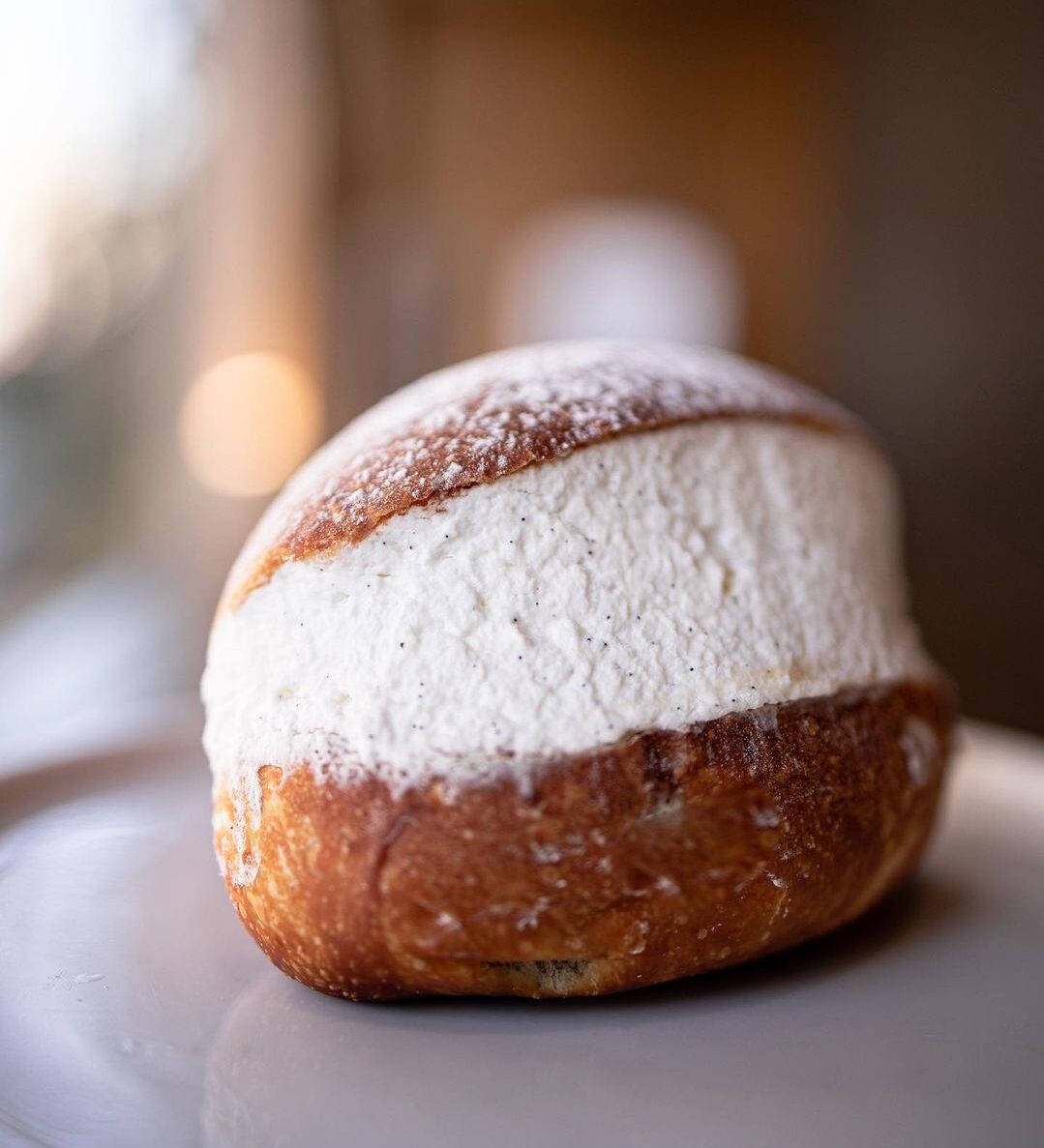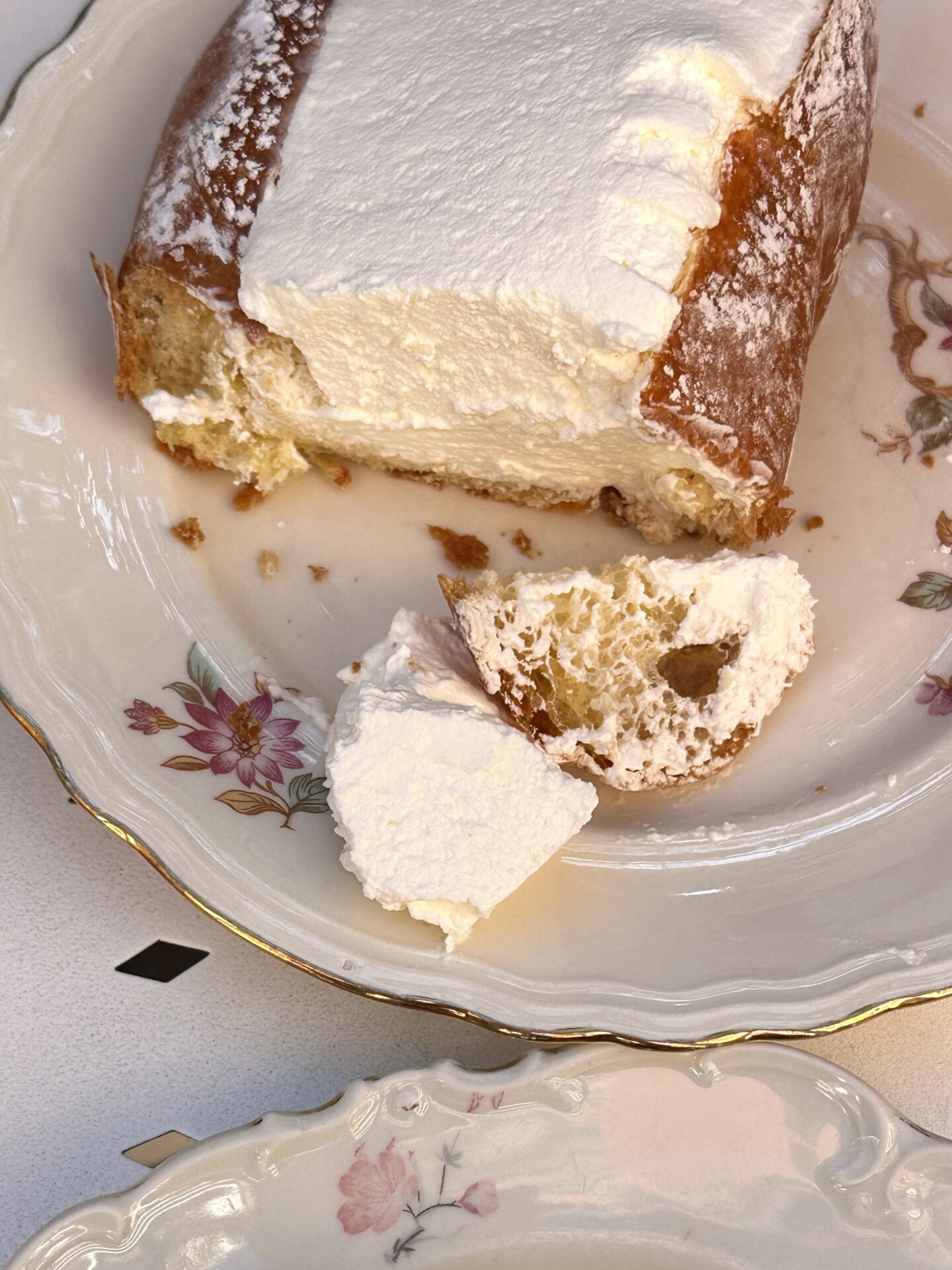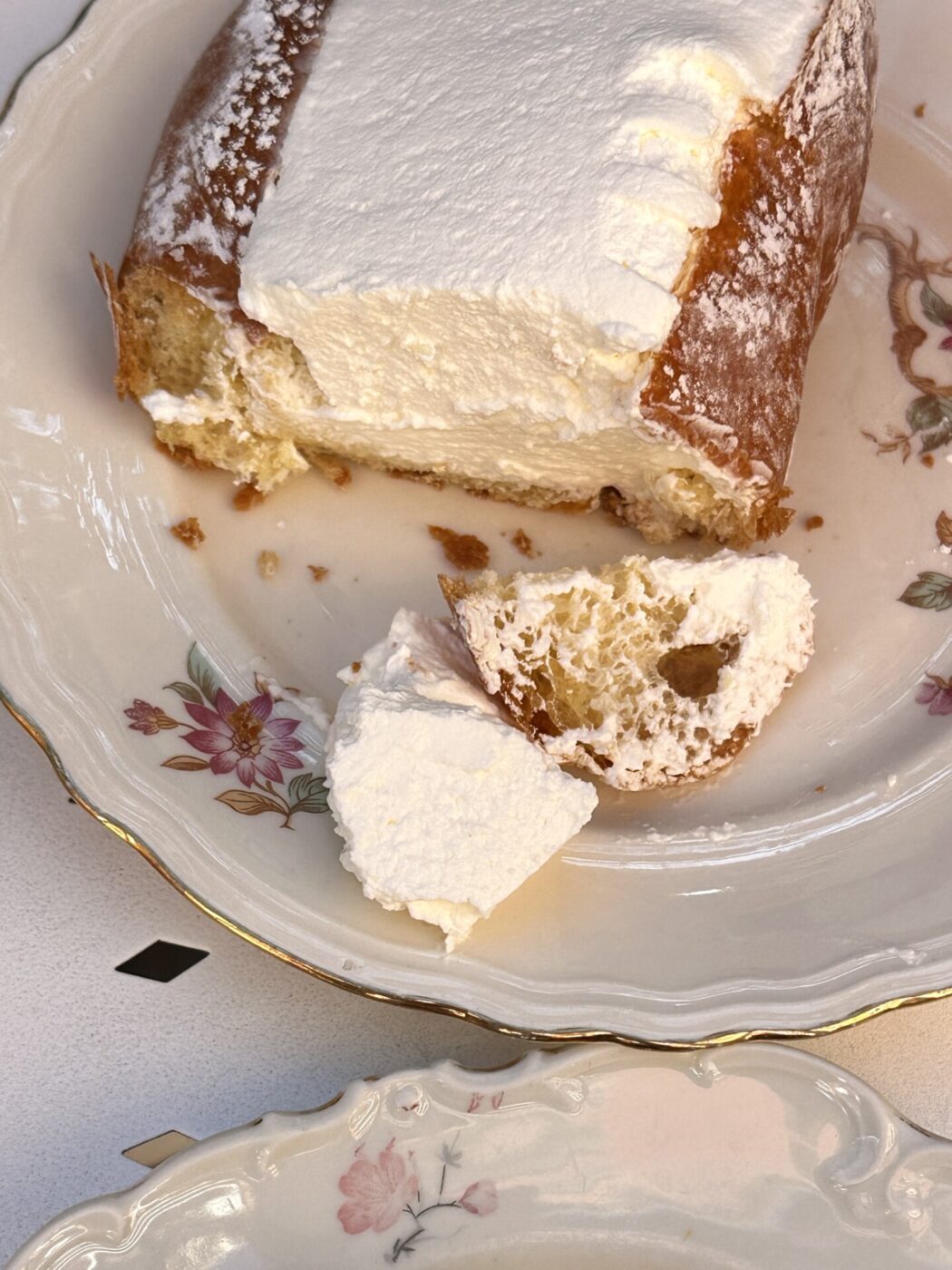One of the simplest, yet greatest, pleasures of living in Rome: taking a leisurely stroll to a local bakery of the likes of Regoli, indulging in a maritozzo for breakfast, and witnessing the Eternal City gradually awaken from its slumber. Yes, the flaky cornetto and crunchy biscotti have their allure, but there’s something uniquely delightful in sinking your teeth into the sweet cloud that is a maritozzo, a soft, yeasty bun overflowing with a sumptuous mound of whipped cream. Its lavish appearance belies a rather delicate interior, and the maritozzo offers a lighter alternative to its crema-filled counterparts. (To make them at home, you can find Italy Segreta’s tried-and-true recipe here!)
While maritozzi were an iconic breakfast choice in Rome during the Dolce Vita era of the 50s and 60s, they gradually faded into the background as mass-produced cornetti claimed the spotlight. In the past few years, however, the cream-filled treats have experienced a resurgence, possibly influenced by the growing popularity of Instagram and TikTok showcasing the aesthetic maritozzi in Rome, instructional videos on how to make them, or the moment when Stanley Tucci was served the decadent pastry one early morning at Bar San Calisto in his show Searching for Italy.
But here in Rome, the maritozzo is more than a mere pastry, it’s symbolic of a deeply Roman flavor of love, and its backstory is befitting of the admiration it has engendered among Italian natives and visitors alike. Those with a bit of etymology under their belt will have already recognized that the pastry’s name derives from the Italian word for husband–marito.
Back in the 19th century, a charming ritual emerged in the heart of Rome when men would propose to their partners on the first Friday of March. But this wasn’t just any ordinary proposal; to sweeten the deal (literally), future husbands would conceal an engagement ring within a maritozzo, metamorphosing this sweet bun into a symbol of unwavering love and commitment. (No stats could be found on how many soon-to-be brides swallowed said rings.)
Other stories touch on a different tradition, in which young women in search of a husband would assemble on Colle Oppio, an ancient hill near the Colosseum, and present heart-shaped maritozzi to the most handsome young man in the village. He, in return, would wed the girl who crafted the finest one.

Courtesy of Roscioli Caffè
Maritozzi haven’t always been symbolic of love, however. Their roots can be traced back to ancient Rome, when “panis mellitus” (a Latin phrase roughly translating to “honeyed bread”) was plentiful. Roman women baked these substantive, sweet loaves to sustain their husbands’ long days working in the fields. Eggs, flour, butter, and salt made up the bread base, and generous amounts of honey and raisins were added in for sweetness.
During the Middle Ages, the maritozzo’s popularity soared in Rome after the church permitted its consumption during Lent–earning it the affectionate nickname Santo Maritozzo. The loaves had evolved somewhat from ancient times: oil was swapped in for butter, and both pine nuts and candied fruit accompanied the raisins.
The essential maritozzo of today reflects these simple, ancient origins. Everything revolves around the bread–a brioche-esque sphere that can fit in the palm of the hand. The soft, doughy rolls are vertically sliced down the center and lavishly filled with panna (whipped cream), creating a mouthwatering, albeit messy, delight. While the classic maritozzo (of which you can find a superlative version at Roscioli Caffè) remains an everlasting favorite, creative adaptations have arisen in modern-day Rome. The panna is sometimes mixed with chocolate chips or topped with fruit. Or replaced with a pine nut and lemon cream like at Faro, or nutella, found at Pasticceria Romoli. Casa Manfredi features the Lenten-style bun, studded with raisins and crowned with an abundance of pillowy whipped cream infused with a kiss of vanilla. Savory versions are popular, especially at Il Maritozzo Rosso, where you’ll find some loaves stuffed with burrata and anchovies, and polpette al sugo. Vegans rave about the version at Fratelli Piermattei.
Certain Roman bakeries, such as Bar San Calisto, opt to slice and fill maritozzi at the time of order. Others, like Pasticceria Regoli and Maritozzaro, choose to pre-assemble these delights fresh each morning–proudly showcasing them within a pastry display to tempt passersby. They are often in high demand: particularly on the first Saturday of December, deemed “Maritozzo Day”.
These days, couples in love continue to embrace the tradition of marriage proposals with a Roman twist, and the maritozzo stands as a lasting testament to the enduring power of love and the beauty of sweet surprises. So remember: when in Italy and the love of your life asks, “Would you like a maritozzo?” be sure to say “I do.”




